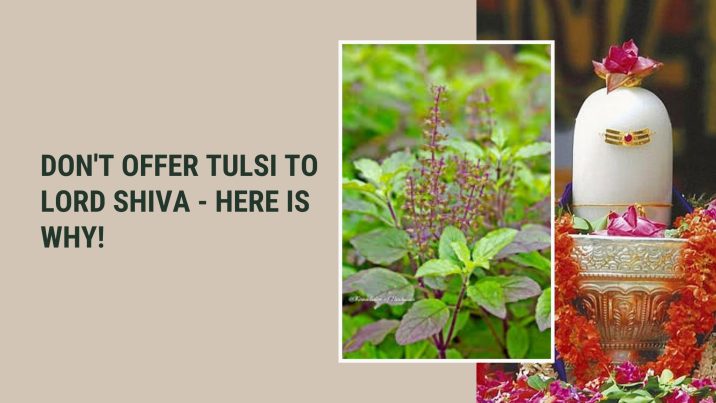
If you’ve ever noticed people offering Puja to Lord Shiva, you’ll see they offer Bael leaves, dhatura flower, milk, and water, but never tulsi (holy basil). Although Tulsi is considered one of the most sacred plants in Hinduism, why is it not used in Shiva’s puja?
This question often comes up during festivals like Sawan or Mahashivaratri, and the answer lies in a blend of mythology, tradition, and spiritual symbolism.
The Story of Vrinda and Jalandhar
One of the most well-known reasons comes from a myth involving Vrinda, a devout woman who was the wife of the demon king Jalandhar. Jalandhar was blessed with invincibility as long as Vrinda remained faithful.
To help Lord Shiva defeat Jalandhar, Lord Vishnu disguised himself as Jalandhar and broke Vrinda’s chastity. When Jalandhar lost his protection and was killed by Shiva, Vrinda was heartbroken. She cursed Vishnu for deceiving her and declared her leaves (Tulsi) should never be offered to Shiva, who was responsible for her husband’s death.
Later, Vrinda took the form of the sacred Tulsi plant. Since then, it’s believed that Tulsi should only be offered to Vishnu and his avatars, never to Shiva.
Ritual Practices and Symbol
Apart from the story, scriptures and customs also support this separation. While Bael leaves are Shiva’s favourite, Tulsi is linked to Vishnu. Mixing the two is said to disrupt ritual harmony, as both deities are worshipped in different ways.
In fact, many households follow this rule strictly and refrain from offering Tulsi on the Shivalinga even during specific pujas.
Are There Any Exceptions?
Some texts, like the Skanda Purana, mention rare instances of Tulsi in Shiva’s worship. But these are not commonly followed in temples or mainstream practice. So, even today, devotees avoid Tulsi in Shiva puja, out of respect for tradition and the story behind it.
In short, Tulsi is not offered to Lord Shiva due to the emotional tale of Vrinda, scriptural guidelines, and the spiritual boundaries between Shaivism and Vaishnavism. By understanding the reason, we also learn to honour the deeper meanings behind rituals.
Feature Image Credit: WeRIndia.




